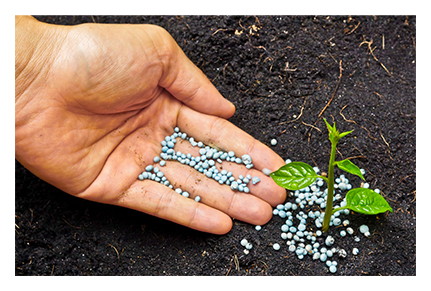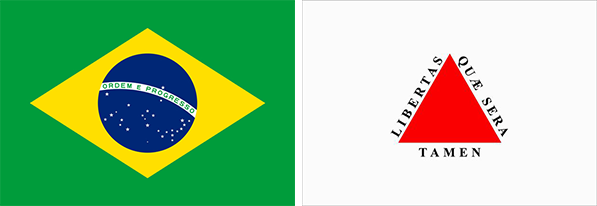U
BE
RA
BA
LAND OF
TRANSPARENT
WATERS
State of
Minas Gerais
Brazil
OUR GREATEST WEALTH
UBERABA HAS ALMOST
400 THOUSAND INHABITANTS
AND IT IS AMONG THE LARGEST
CITIES IN THE STATE
OF MINAS GERAIS
The name of the city is of indigenous origins and it means clear and transparent
Waters. Uberaba lives up to the hydrographic basin that bathes the municipality.
Formed by the Paraná River and the Rio Grande River basin, its sub-basin is the
Uberaba River and its tributaries, in addition to having, underground, the rich
Guarani aquifer. All this water potential gives Uberaba the classification of having
the best water in the region. Water is ideal for human consumption and industrial
production of foodstuff.
Uberaba is part of the Rota do Triângulo Tourist Circuit due to its strategic location,
as it is equidistant, 500 km, from national capitals of recognized importance, such as
São Paulo, Goiânia, Brasília, and Belo Horizonte (MG), connected by air or major
highways from the country.
The Guarani Aquifer or Guarani Aquifer System (GAS) is the second largest source of fresh underground water on the planet and occupies an area of 1.2 million km2. Uberaba is one of the few cities in the state of Minas Gerias sitting above the Guarani Aquifer.
PEIRÓPOLIS
IS THE LARGEST
PALEONTOLOGICAL
SITE IN BRAZIL



Where fossils of the giant Titanosaurus,
named Uberabatitan Ribeiro, the largest
paleontological find in the world, was
found. In addition to its geological
character, Peirópolis has an exuberant
green area and water falls that attract
tourists from all over the country. The
location is ideal for those who wish to
invest in tourism.

FROM HERE TO THE WORLD
Uberaba is considered the cradle of Brazilian livestock, as it was here that the first Zebu specimen arrived given rise to the Zebu breed in Brazil. Nowadays the Zebu herd has a population of over
200 THOUSAND.
ExpoZebu attracts breeders from
60 COUNTRIES.
Every year, the largest Zebu cattle fair in the world moves the semen and elite cattle trade. The Brazilian Association of Zebu Breeders (ABCZ) brings together more than
23 THOUSAND BREEDERS
from all over the world to the city of Uberaba.
The city stands out for its pioneering spirit in improving the Zebu breed. The bovine genetics sector, according to the Brazilian Association of Artificial Insemination (Asbia), produced in the country
10,7 MILLION
doses of semen during the first six months of the year. The main animal biogenetics companies are in the Municipality.

The city stands out in the planting of
sugarcane, soybeans, and corn
and it is also the leader in the
ranking of sugarcane production,
with a production of
7,97 TONS
In addition to serving the
production of sugar, it also serves
the production of ethanol.
It is also responsible for the
production of renewable energy.

PROSPERITY EVERYDAY

The Uberaba industrial hub has
2300
COMPANIES.
A world icon in animal biotechnology, the city supplies the domestic market for fertilizers from the largest phosphate-producing hub in Latin America. The climatic, hydrographic, and road characteristics make the municipality an attractive place for industrial growth. It is important to emphasize that the municipality is the largest logistics hub in Brazil.
The Technological Park brings together technology-based companies and universities in an area of
1.600.000 m²
and has an Innovation Center with
3.256 m²
OUR
STRATEGIC
LOCATION
Minas has the largest road network in Brazil, with
7.689 km
of federal highways,
23.663 km
of state highways, and
238.191 km
km of municipal highways. Uberaba is crossed by federal highways BR-262 and BR-050. As Uberaba is connected to most of the major cities in Brazil; many goods pass through the city every day. This makes Uberaba a strategic location due to logistics.
The terminal VLI is one of the largest and most modern cargo terminals in Latin America. The structure has an annual handling capacity of
6,3 MILLION
tons of grain and
2,4 MILLION
tons of sugar, connecting sugar and grain-producing regions to the Port of Santos and the Luiz Antônio Mesquita Port Integrator Terminal – Tiplam.

YOUR
COMPANY
ON THE ROUTE
OF MAJOR
GLOBAL
INVESTMENTS
EPZ
GUARANTEES
TAX INCENTIVES
EPZ brings a lot of incentives to the companies with export potential.The Processing and Export Zone occupies an area of
2 MILLION m²,
devied into
62 LOTS OF 5
thousand square meters for the installation of industries. Through tax incentives, the companies that are installed there have differentiated tax, exchange, and administrative treatment. It is an attractive business opportunity and wealth generation. It is located along the BR 050 highway, one of the main arteries in the country, which facilitates the flow of production.
Attracting investors to the EPZ is the mission that the municipality has been performing. In Uberaba, reputable customs clearance offices and the existence of the Interior Customs Station (Eadi), are attractive for setting up companies, in addition to the benefits granted to companies.
DRY PORT:
CONNECTION
WITH THE
INTERNATIONAL
MARKET
The dry port optimizes the exports and
imports of products to and from different locations. Installed in Uberaba 22 years ago, the Inland Customs Station (Eadi) works with the logistics of import and export of cargo from various customs regimes. This year, Eadi registered the movement of
10.179
of 20” of products for export and import. In dollars, the movement expressed
US$ 871,980
million in exports and
US$ 11,320
million in imports.



